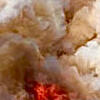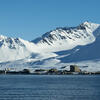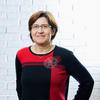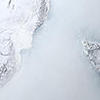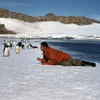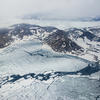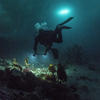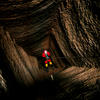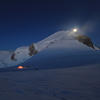You are here
A Year in Antarctica
04.21.2016, by
As an open-sky laboratory, the Southern Continent provides an ideal setting to monitor the various parameters of our climate: atmosphere, snow, meteorological conditions… familiar research for Roxanne Jacob, who has returned from a year-long mission to Antarctica’s Concordia Station.
Roxanne was detached by the Institut Polaire Paul-Emile Victor (IPEV) and was involved in the projects carried out by researchers at the LGGE (Laboratoire de glaciologie et de géophysique de l'environnement).

1
Slideshow mode
When the researcher arrives at Concordia Station, during the austral summer (which lasts between November and February), some 80 people are already working on site. That number shrinks considerably during the winter months.
Pascal ROBERT / OTELo / CNRS Photothèque

2
Slideshow mode
About 10 people, in charge of scientific and logistic issues, have the privilege of experiencing the complete isolation of austral winter months, surrounded by desert landscapes and mesmerizing skies.
Pascal ROBERT / OTELo / CNRS Photothèque

3
Slideshow mode
During that period, Roxanne will be the only one overseeing the six projects dedicated to glaciology and atmospheric chemistry. The researchers and her predecessor make the most of the summer months to show her the ropes.
Thibaut VERGOZ / IPEV / LGGE / CNRS Photothèque

4
Slideshow mode
She prepares for a rigorous weekly schedule that involves the control and maintenance of the equipment, data retrieval from the instruments, sample collection and analysis…
Thibaut VERGOZ / IPEV / LGGE / CNRS Photothèque

5
Slideshow mode
Every month, she digs a hole 50-80 cm deep in a snow pit to collect samples. This requires spending a lot of time outside—where temperatures sometimes dip down to -80°C.
Thibaut VERGOZ / IPEV / LGGE / CNRS Photothèque

6
Slideshow mode
In her laboratory in Concordia Station, the scientist analyzes the different samples collected. Weight is a parameter used to monitor the physical properties of the superficial snow cover.
Thibaut VERGOZ / IPEV / LGGE / CNRS Photothèque

7
Slideshow mode
Roxanne frequently visits the atmospheric chemistry laboratory, located 800 m away from the station. Most trips are made on foot to avoid contaminating sample areas.
Thibaut VERGOZ / IPEV / LGGE / CNRS Photothèque

8
Slideshow mode
During each trip, she maintains radio contact with the station in case of problems. She sometimes uses a snowmobile to carry equipment.
Thibaut VERGOZ / IPEV / LGGE / CNRS Photothèque

9
Slideshow mode
For security reasons, the researcher must stay in a radius of 2 km around the station during the winter months. Some instruments, such as these beacons used to track snow accumulation, are no longer accessible.
Thibaut VERGOZ / IPEV / LGGE / CNRS Photothèque

10
Slideshow mode
To ensure the reliability of measurements, the equipment must be regularly inspected and monitored. Each week, Roxanne clears the snow off the meteorological instruments on the 45 m-tall “American Tower.”
Thibaut VERGOZ / IPEV / LGGE / CNRS Photothèque

11
Slideshow mode
The researcher also replaces the filters that collect aerosols in the air. Their analysis helps determine their origins and influence on the composition of the atmosphere.
Thibaut VERGOZ / IPEV / LGGE / CNRS Photothèque

12
Slideshow mode
During winter, Roxanne will forward a weekly and detailed report, as well as the latest results, to the LGGE researchers. This is also a way for her to maintain contact with the outside world.
Thibaut VERGOZ / IPEV / LGGE / CNRS Photothèque
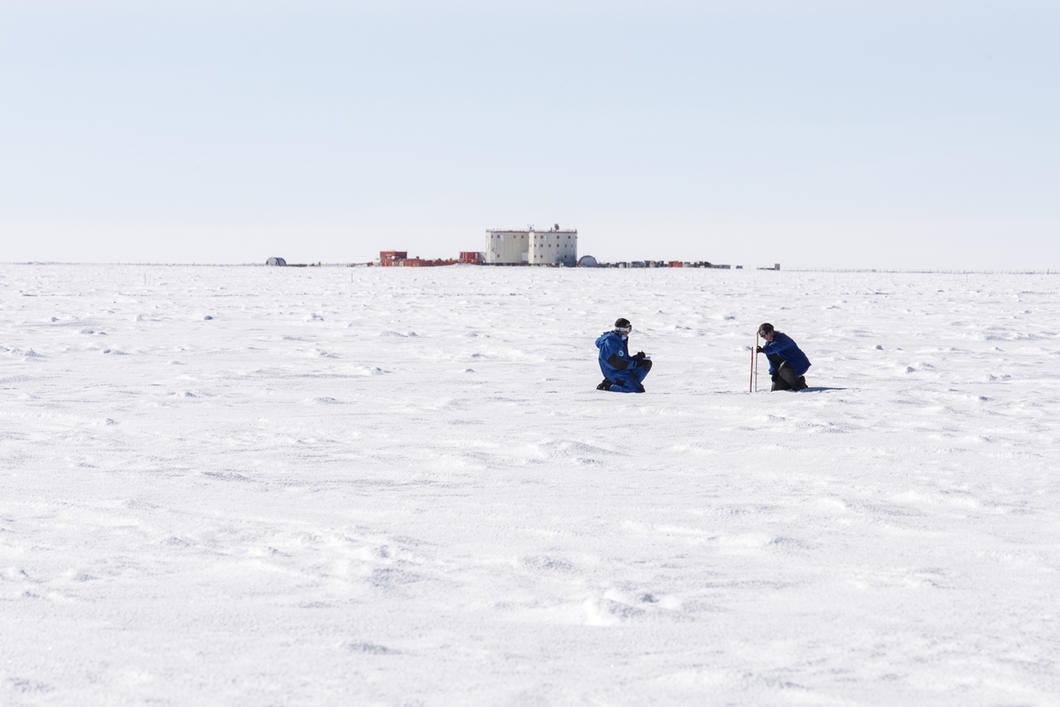
13
Slideshow mode
Her successor is now in charge of overseeing measurements. After 14 months in cold isolation, Roxanne is back in France, eyeing another potential summer in Antarctica.
Thibaut VERGOZ / IPEV / LGGE / CNRS Photothèque
Explore more
Earth
Article
11/09/2025
Article
10/22/2025
Article
07/16/2025
Article
07/07/2025
Article
05/31/2025
climatology
Article
04/18/2023
Article
05/20/2022
Article
09/16/2019
Article
01/22/2018
Article
03/23/2023
Antarctica
Article
09/22/2021
Article
08/08/2019
Slideshow
04/09/2019
Slideshow
01/14/2019
Article
03/23/2023



